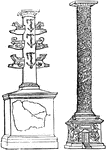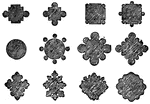Greek Caryatid
The Greek Caryatid is a female figure used as a support in place of a column. It is found in the temple…
Caryatis from the Erechtheum at Athens
Caryatides are a blending of architecture and sculpture, but they are not of frequent occurrence. These…
Profile of the Caryatis with Pedestal and Entablature
Caryatides are a blending of architecture and sculpture, but they are not of frequent occurrence. These…
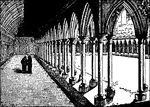
A Cloister at a French Monastery from the Middle Ages
This illustration shows one fragment of a French cloister built in the Middle Ages. The architecture…
Column
"Columns are largely employed in the architecture of Egyptian temples. They are of various forms." —D'Anvers,…
Column
"Columns are largely employed in the architecture of Egyptian temples. They are of various forms." —D'Anvers,…
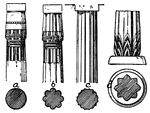
Column Types
Egyptian columns had shafts of three types: a) circular or cylindrical, b) clustered, c) polygonal or…
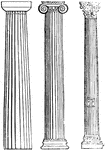
Columna
"A pillar or column. The use of the trunks of trees placed upright for supporting buildings, unquestionably…
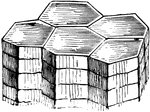
Columnar Rock
This illustration shows a more or less perfect columnar structure, due to constraction on cooling, is…

Columnar Scots Pine
Also known as Pinus sylvestris fastigiata. This tree is nearly identical to a regular Scots Pine, only…

Columns of Domitian
"The columns of cipollino, which belonged to the Palace of Domitian." — Young, 1901
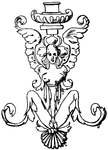
Grotesque Column
This Grotesque column is a squatting winged female without arms. It is found in the Guadagni Palace…

Semi-Columns
"Semi-columns (Roman). Engaged columns of the Maison Carrée, Nîmes, France." -Whitney,…
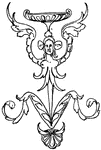
Thin Grotesque Column
This Thin Grotesque column is a squatting winged female without arms. It is found in the Guadagni Palace…

Greek Corinthian Order
The Corinthian order is one of the Classical orders of Greek and Roman architecture, characterized by…
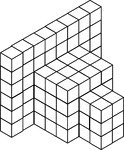
108 Stacked Congruent Cubes
Illustration of 108 congruent cubes stacked at various heights. A 3-dimensional representation on a…
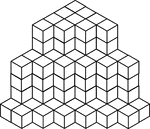
117 Stacked Congruent Cubes
Illustration of 117 congruent cubes stacked in columns of one, four, and six. A 3-dimensional representation…

128 Stacked Congruent Cubes
Illustration of 128 congruent cubes stacked so they form a rectangular solid that measures 4 by 4 by…
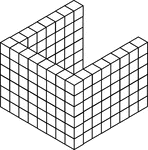
132 Stacked Congruent Cubes
Illustration of 132 congruent cubes stacked in 22 columns of 6 in the shape of a U. A 3-dimensional…
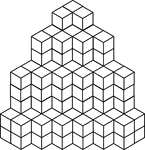
154 Stacked Congruent Cubes
Illustration of 154 congruent cubes stacked in columns increasing from one to four. A 3-dimensional…
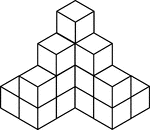
16 Stacked Congruent Cubes
Illustration of 16 congruent cubes stacked at various heights. A 3-dimensional representation on a 2-dimensional…
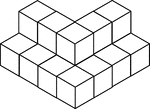
17 Stacked Congruent Cubes
Illustration of 17 congruent cubes stacked in ones and twos in the shape of a V. A 3-dimensional representation…

2 Congruent Cubes
Illustration of two congruent cubes that are tangent along an edge. A 3-dimensional representation on…

20 Stacked Congruent Cubes
Illustration of 20 congruent cubes stacked in twos and threes. A 3-dimensional representation on a 2-dimensional…
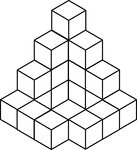
20 Stacked Congruent Cubes
Illustration of 20 congruent cubes stacked at various heights. A 3-dimensional representation on a 2-dimensional…
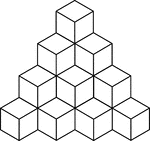
20 Stacked Congruent Cubes
Illustration of 20 congruent cubes stacked at heights increasing from 1 to 4 cubes. A 3-dimensional…
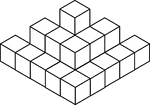
22 Stacked Congruent Cubes
Illustration of 22 congruent cubes stacked in ones, twos, and threes. A 3-dimensional representation…
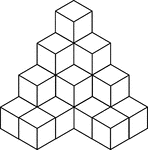
22 Stacked Congruent Cubes
Illustration of 22 congruent cubes stacked at various heights. A 3-dimensional representation on a 2-dimensional…
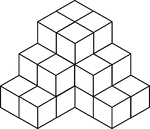
24 Stacked Congruent Cubes
Illustration of 24 congruent cubes stacked at various heights to resemble steps. A 3-dimensional representation…
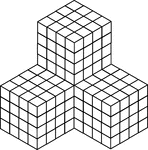
256 Stacked Congruent Cubes
Illustration of 256 congruent cubes stacked so they form 4 larger cubes that measures 4 by 4 by 4 each.…
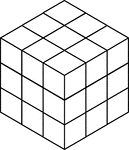
27 Stacked Congruent Cubes
Illustration of 27 congruent cubes stacked to resemble a larger cube that measures three by three by…

27 Stacked Congruent Cubes
Illustration of 27 congruent cubes stacked at various heights in the shape of a W. A 3-dimensional representation…

28 Congruent Cubes Placed in the Shape of a Square
Illustration of 28 congruent cubes placed in the shape of a square. A 3-dimensional representation on…
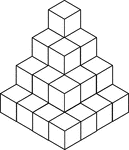
30 Stacked Congruent Cubes
Illustration of 30 congruent cubes stacked in decreasing heights. A 3-dimensional representation on…

33 Stacked Congruent Cubes
Illustration of 33 congruent cubes stacked at various heights in a zigzag pattern. A 3-dimensional representation…
35 Stacked Congruent Cubes
Illustration of 35 congruent cubes stacked in ones and twos in the shape of a W. A 3-dimensional representation…

35 Stacked Congruent Cubes
Illustration of 35 congruent cubes stacked at various heights. A 3-dimensional representation on a 2-dimensional…

36 Stacked Congruent Cubes
Illustration of 36 congruent cubes stacked at various heights with outer edges forming a square. A 3-dimensional…

36 Stacked Congruent Cubes
Illustration of 36 congruent cubes stacked to resemble a 1 by 1 by 1 cube on a 2 by 2 by 2 cube on a…

39 Stacked Congruent Cubes
Illustration of 39 congruent cubes stacked at various heights. A 3-dimensional representation on a 2-dimensional…

4 Stacked Congruent Cubes
Illustration of 4 congruent cubes stacked in ones and twos. A 3-dimensional representation on a 2-dimensional…











